With tax time just around the corner, many Australians are busy gathering documents, receipts, and tax statements. But it’s just as important to prepare for something else: protecting yourself from tax scams.
With over $119 million lost to scams in just the first four months of 2025, scammers are exploiting every opportunity, including the tax system. To help keep you and your money safe, COBA’s Financial Crimes and Cyber Resilience team share expert tips on how to spot and avoid tax scams.*

What is a tax scam, and how do they work?
Tax scams often involve criminals impersonating government agencies like the Australian Taxation Office (ATO) or myGov. These scammers send phishing emails or text messages to trick you into sharing personal information - such as your myGov username, password, or other sensitive details - or to get you to click malicious links.
How can you protect yourself from tax scams?
Here are some key steps to help you stay safe:
- Verify the source - Always double-check the sender's email address. Official messages from myGov typically come from addresses ending in @my.gov.au. Don’t respond unless you’re certain it’s legitimate.
- Avoid clicking on links - If you receive an email or text with a link claiming to be from myGov, don’t click it. Instead, type the official website address directly into your browser: https://www.my.gov.au
- Be wary of urgency or threats - Scammers often try to pressure you with urgent messages - like threats to suspend your account or offers of unexpected refunds. These are red flags. Stay calm and verify the claim independently.
- Never share personal details - myGov and government agencies will never ask for your password, Tax File Number (TFN), or bank details via email or text. Never share this information in response to unsolicited messages.
- Use two-factor authentication: Enable two-factor authentication (2FA) for your myGov account if possible. This adds an extra layer of security by requiring a second form of verification, such as a code sent to your mobile device, in addition to your password.
- Educate others - Spread awareness about myGov phishing scams among your friends, family, and colleagues. Encourage them to be vigilant and to report any suspicious emails they receive.
- Regularly monitor your accounts - Keep a close eye on your myGov account activity and regularly review your linked services, such as the ATO, Centrelink, Department Veterans Affairs and Medicare. Report any unauthorised activity or changes to your account immediately.
MyGov have provided further information about active scams and examples of myGov impersonation scam on their website to help you stay vigilant. You can review them here.
By being aware of the risks associated with myGov phishing emails and taking proactive measures, members can safeguard their personal information and minimise the likelihood of falling victim to scams.
How do you report a tax scam?
If you receive a suspicious message claiming to be from myGov or another government agency, it’s important you report it to protect yourself and others from being scammed.
- Report it to the Australian Cyber Security Centre (ACSC) or the myGov Help Desk
- If it's related to the ATO:
- Call the ATO’s dedicated scam line: 1800 008 540
- Forward suspicious emails to ReportScams@ato.gov.au
- Take a screenshot of fake social media posts or phishing messages and email them to ReportScams@ato.gov.au
More information about how to report a tax scam can be found on the ATOs website.
What to do if you suspect a scam
If you believe you may have been a victim or lost money to a scam, it’s important to notify your financial institution as soon as possible.
Australian Mutual Bank members can speak to our Fraud Team by calling 13 61 91 (Monday to Friday 8:00am - 7:00pm, Saturday 8:30am - 11:30am, Sydney time) or by emailing info@australianmutual.bank.
Seek support from IDCARE (a free government-funded service) who can help you develop a response plan to limit the damage. IDCARE will never contact you out of the blue.
Beware of follow up scams, particularly ones promising to help you get your money back. One in three victims of a scam have been scammed more than once according to Scamwatch.
If you or someone you know has been impacted and may need ongoing help, there are support services available. These avenues of support are available to help, listen and believe.
For more advice on how to avoid scams, see our Security Advice section or visit the Scamwatch website at www.scamwatch.gov.au.
Customer-owned banks are dedicated to safeguarding their customers from scams and fraud. Find out more about the banking industry’s Scam-Safe Accord here, an initiative that represents a united front against scammers and reinforces the banking sector's determination to strengthen consumer protection.
*Source: Customer Owned Banking Association (COBA)







